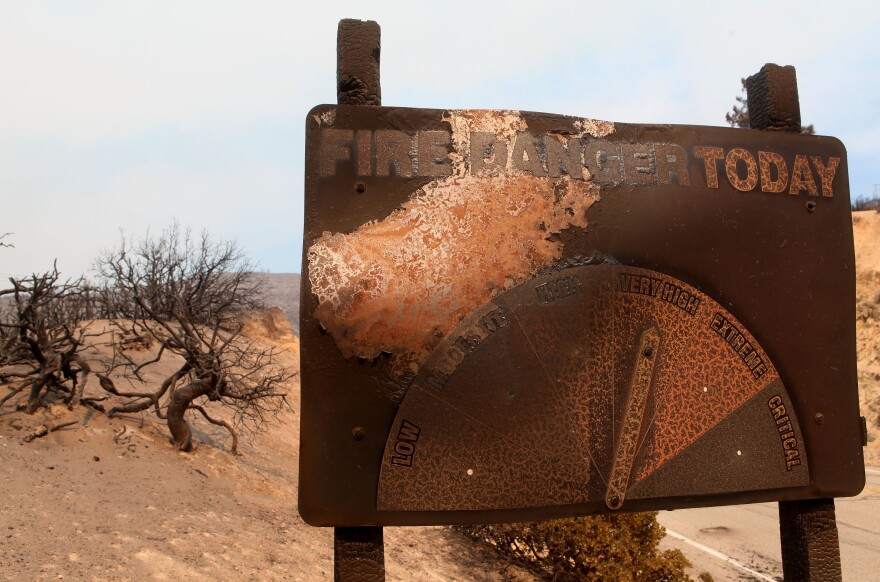With our free press under threat and federal funding for public media gone, your support matters more than ever. Help keep the LAist newsroom strong, become a monthly member or increase your support today.
Wildfires Are Altering Streamflows In The Western US

It's no secret that fires have increased in the West over the past few decades. But what effect will that have on the water supply?
Park Williams, an associate professor at UCLA's department of geology, led a study that found big fires increased water streamflow on average by 30% over the span of six years in areas where more than one-fifth of its forest burned.
Williams says fires remove forest cover, which leads to forests using less water. On top of that, soil can get cooked during blazes and repel water, leading to enhanced streamflows.
He says this phenomenon applies to the Sierra Nevada.
"We think that in the Sierra Nevada, now we're kind of on the precipice of fires being large enough in recent years to actually change the math about how much water is coming out of the mountains and into our lakes in California's Central Valley," Williams said.
All of this could be good news. More water might become available amid the drought, Williams pointed out.
But at the same time, water — post-blaze — can become polluted with large sediment and debris loads, and mudslides can increase, as well as other hazards.
And water managers face increased pressure. Every fall and winter, overseers decide how much water needs to be let out of lakes at the base of the Sierra Nevada to make room for the possible giant storm that could lead to a massive rush of water coming into the lake all at once.
"And if they don't make that calculation accurately, they could end up with situations where lakes are overtopping — kind of like what happened in 2017 with Lake Oroville when that lake nearly overflowed, and then they had the damaged spillway and had to evacuate many thousands of people because of the flood risk."
Williams hopes his research can help managers determine how much water falls in the mountains and how much of that ends up in our streams.
That way, the extra water — brought upon by fires — can be used to its full extent.
At LAist, we believe in journalism without censorship and the right of a free press to speak truth to those in power. Our hard-hitting watchdog reporting on local government, climate, and the ongoing housing and homelessness crisis is trustworthy, independent and freely accessible to everyone thanks to the support of readers like you.
But the game has changed: Congress voted to eliminate funding for public media across the country. Here at LAist that means a loss of $1.7 million in our budget every year. We want to assure you that despite growing threats to free press and free speech, LAist will remain a voice you know and trust. Speaking frankly, the amount of reader support we receive will help determine how strong of a newsroom we are going forward to cover the important news in our community.
We’re asking you to stand up for independent reporting that will not be silenced. With more individuals like you supporting this public service, we can continue to provide essential coverage for Southern Californians that you can’t find anywhere else. Become a monthly member today to help sustain this mission.
Thank you for your generous support and belief in the value of independent news.

-
What do stairs have to do with California’s housing crisis? More than you might think, says this Culver City councilmember.
-
Yes, it's controversial, but let me explain.
-
Doctors say administrator directives allow immigration agents to interfere in medical decisions and compromise medical care.
-
The Palisades Fire erupted on Jan. 7 and went on to kill 12 people and destroy more than 6,800 homes and buildings.
-
People moving to Los Angeles are regularly baffled by the region’s refrigerator-less apartments. They’ll soon be a thing of the past.
-
Experts say students shouldn't readily forgo federal aid. But a California-only program may be a good alternative in some cases.







